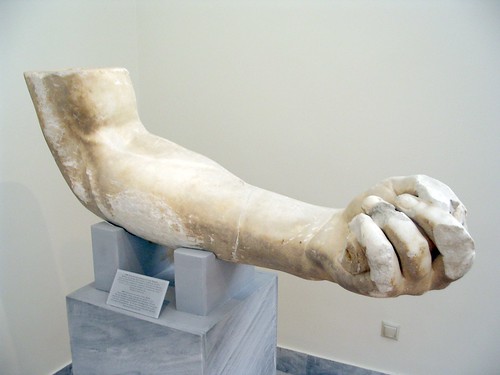 For a runner in today's world, there are countless issues making an appearance in discussions, magazines, and clinics. Many of them focus on running mechanics. Is there a best way to run? Is there not? Should you be a heel striker or mid-foot striker? Is there a benefit to running in a minimalist shoe? Should you run barefoot? The list of burning questions goes on and on and on.
For a runner in today's world, there are countless issues making an appearance in discussions, magazines, and clinics. Many of them focus on running mechanics. Is there a best way to run? Is there not? Should you be a heel striker or mid-foot striker? Is there a benefit to running in a minimalist shoe? Should you run barefoot? The list of burning questions goes on and on and on.
All of these questions focus on issues "below the waist". But the answers don't lie there as we might think. Improving your running mechanics may in fact have little to do with your lower body.
The solutions lie in - the arms? What makes the arms such an important tool in running mechanics?
Walking and running demand a movement pattern in which the opposite arm and leg work in synchrony - the right arm moves with the left leg, and vice versa. Gait is just a series of rotations, upper body and torso matching lower body and pelvis. Angular momentum is an important issue in all of this: the angular momentum of your upper body and torso must match that of the lower body and pelvis, otherwise you will tend to veer towards one side or the other, albeit gradually. The net result would be much like having a problem with the alignment in your car.
When the left leg is in propulsive phase, the right arm is in posterior swing. As they work in synchrony, they perform these motions at the same frequency. The upper body does not oscillate at one frequency, with the lower body doing something different. They work together.
Arm and leg motions are intimately related - and we can use this to our advantage.
Suggestions for improving your running mechanics are often put in the context of where to put the foot or how the lower body functions during stance and swing. But I would suggest that there is an easier way - control the position and movement of the arms. They are certainly much easier to place in space. The lower body has no choice but to follow the lead set by the upper body - angular momentum says so.
There are two ways in which the arms can assist in improving running mechanics:
1. Optimize stride frequency. If the arms are moving at a faster rate, the legs will follow. If you want to change your stride frequency, change the rate of arm swing.
2. Optimize the propulsive phase of gait. Using the example above, if the right arm is in posterior swing while the left leg is in propulsion, then a crisp posterior arm swing (at the shoulder) can effectively drive the left leg posteriorly. Think of it as "punching the elbows".
Simply being cognizant of your arm swing - and making changes to it - can optimize your running mechanics. With these changes, your foot strike will naturally evolve towards a position in which the foot strikes under the center of mass.
In running, the arms have it.
Photo credits: Ian W Scott
 "Running Injuries: Etiology And Recovery- Based Treatment" (co-author Bridget Clark, PT) appears in the third edition and fourth editions of "Clinical Orthopaedic Rehabilitation: A Team Approach" by Charles Giangarra, MD and Robert C. Manske, PT.
"Running Injuries: Etiology And Recovery- Based Treatment" (co-author Bridget Clark, PT) appears in the third edition and fourth editions of "Clinical Orthopaedic Rehabilitation: A Team Approach" by Charles Giangarra, MD and Robert C. Manske, PT.
 Allan Besselink, PT, DPT, Ph.D., Dip.MDT has a unique voice in the world of sports, education, and health care. Read more about Allan here.
Allan Besselink, PT, DPT, Ph.D., Dip.MDT has a unique voice in the world of sports, education, and health care. Read more about Allan here.
 Top 5 finalist in three categories: "Best Overall Blog", "Best PT Blog" and "Best Advocacy Blog".
Top 5 finalist in three categories: "Best Overall Blog", "Best PT Blog" and "Best Advocacy Blog".